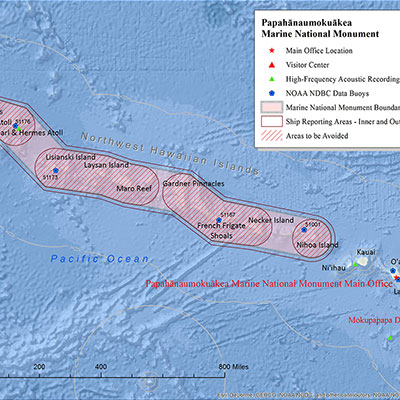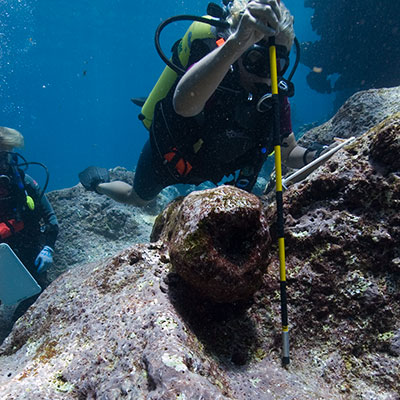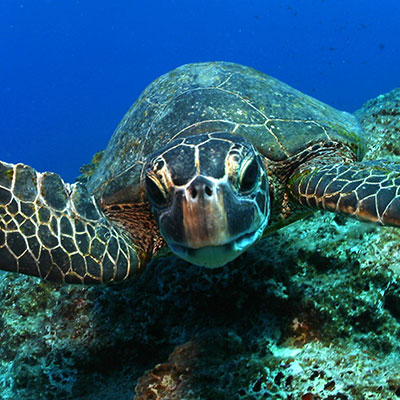Papahānaumokuākea Marine National Monument

Papahānaumokuākea Marine National Monument (PMNM) is the largest fully protected conservation area under the U.S. flag, and one of the largest marine conservation areas in the world. It encompasses more than 580,000 square miles of the Pacific Ocean, an area larger than all of the country's national parks combined. Scientific, cultural and maritime research supports overall Monument operations, including those needed to achieve conservation and management goals of the Monument. The Monument's coral reef research program focuses on basic habitat characterization to understand the diversity and abundance of fishes, algae, corals, and other reef invertebrates throughout the archipelago. Additionally, the Monument’s maritime heritage program documents its historic resources, such as shipwrecks and other submerged archeological resources in the Monument. Research in deeper offshore waters has employed multibeam sonar, submersibles, and ROVs (remotely operated vehicles) to document rarely seen biological resources and topographical features contained within the Monument. The results of these shallow and deep-water research efforts will aid in the creation and revision of management plans. Current visitation is limited primarily to management activities by jurisdictional agencies, research, education, Native Hawaiian practices, and a small number of recreational trips to historical sites. The Monument is interested in managing risks, such as vessel groundings and marine debris, and increasing enforcement capability to address threats from illegal activities. Interested graduate students and principal investigators should contact the Research Coordinator to discuss their research ideas prior to launching a project. All research activities will require a permit.




